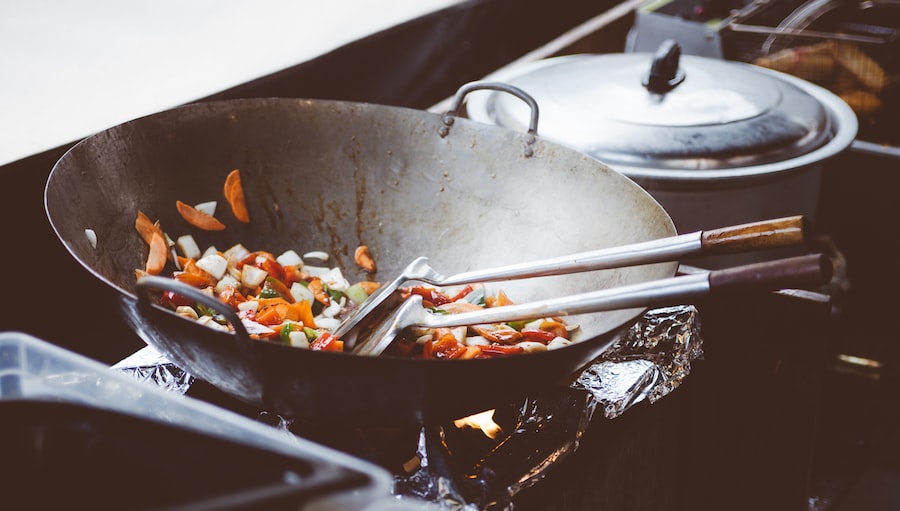Growing Peonies in Pots: Tips and Tricks for a Beautiful Container Garden

Peonies are beloved for their stunning blooms and intoxicating fragrance, making them a popular choice among gardeners. Traditionally, peonies are grown in the ground, but growing them in pots has become increasingly popular for several reasons. Growing peonies in pots allows for greater flexibility in terms of placement and mobility, making it easier to care for these beautiful flowers. Additionally, growing peonies in pots can be a great option for those with limited space or poor soil conditions. In this article, we will explore the advantages of growing peonies in pots and provide a comprehensive guide on how to successfully grow and care for them.
Key Takeaways
- Peonies can be grown successfully in pots with proper care and attention.
- Choosing the right pot size and material is crucial for the health and growth of peonies.
- Peonies require well-draining soil with a pH level between 6.5 and 7.5 for optimal growth.
- Planting peonies in pots requires careful attention to depth, spacing, and watering.
- Regular watering, fertilizing, and pest control are essential for healthy peonies in pots.
Choosing the Right Pot for Peonies
When it comes to choosing the right pot for your peonies, there are several factors to consider. First and foremost, you’ll want to choose a pot that is large enough to accommodate the root system of your peony plant. Peonies have deep roots, so it’s important to choose a pot that is deep enough to allow for proper root growth. Additionally, you’ll want to choose a pot that has good drainage to prevent waterlogged soil, which can lead to root rot.
There are several types of pots suitable for growing peonies. Terracotta pots are a popular choice due to their natural aesthetic and ability to regulate moisture levels. However, terracotta pots can be heavy and prone to cracking in freezing temperatures. Plastic pots are lightweight and durable, making them a practical choice for growing peonies. Fabric pots are another option, as they provide excellent drainage and air circulation for the roots.
Selecting the Right Soil for Peonies
The quality of the soil is crucial for the successful growth of peonies in pots. Peonies prefer well-draining soil that is rich in organic matter. The ideal soil pH for peonies is slightly acidic to neutral, ranging from 6.0 to 7.0. To achieve the optimal soil composition, you can mix equal parts of garden soil, compost, and perlite or vermiculite to improve drainage.
In addition to the right soil composition, it’s important to provide your peonies with the necessary nutrients for optimal growth. Before planting your peonies in pots, you can incorporate organic matter such as compost or well-rotted manure into the soil. This will help improve the soil structure and provide a slow-release source of nutrients. Additionally, you can use a balanced slow-release fertilizer specifically formulated for flowering plants to provide your peonies with the necessary nutrients throughout the growing season.
Planting Peonies in Pots: Step-by-Step Guide
| Step | Description |
|---|---|
| 1 | Choose a pot that is at least 12 inches in diameter and has drainage holes. |
| 2 | Fill the pot with a well-draining potting mix. |
| 3 | Plant the peony root so that the eyes are facing up and the top of the root is about 2 inches below the soil surface. |
| 4 | Water the peony thoroughly after planting. |
| 5 | Place the pot in a location that receives at least 6 hours of sunlight per day. |
| 6 | Water the peony regularly, keeping the soil moist but not waterlogged. |
| 7 | Fertilize the peony with a balanced fertilizer in the spring and again in the fall. |
| 8 | Deadhead spent blooms to encourage more flowers. |
| 9 | Protect the peony from extreme temperatures and frost by moving the pot indoors or covering it with a frost blanket. |
To plant peonies in pots, follow these step-by-step instructions:
1. Prepare the pot and soil: Choose a pot that is at least 18 inches in diameter and has drainage holes at the bottom. Fill the pot with a well-draining potting mix, leaving about 2 inches of space at the top.
2. Planting the peony root: Place the peony root in the center of the pot, making sure that the eyes (buds) are facing upwards. Cover the root with soil, leaving about an inch of space between the soil surface and the rim of the pot.
3. Watering and mulching: After planting, water the peony thoroughly to settle the soil. Apply a layer of organic mulch, such as straw or wood chips, around the base of the plant to help retain moisture and suppress weed growth.
Watering and Fertilizing Peonies in Pots
Proper watering and fertilizing are essential for maintaining healthy peonies in pots. Peonies require regular watering, especially during hot and dry periods. The frequency of watering will depend on the weather conditions and the moisture retention capacity of your potting mix. As a general rule, water your peonies when the top inch of soil feels dry to the touch. Avoid overwatering, as this can lead to root rot.
In terms of fertilizing, peonies benefit from a balanced slow-release fertilizer applied in early spring and again in early summer. Follow the instructions on the fertilizer packaging for the recommended application rate. Additionally, you can supplement with liquid fertilizer every 4-6 weeks during the growing season to provide an extra boost of nutrients.
To maintain healthy peonies in pots, it’s important to monitor their growth and adjust watering and fertilizing practices accordingly. If you notice any signs of nutrient deficiencies, such as yellowing leaves or stunted growth, you may need to increase the frequency or amount of fertilizer applied.
Protecting Peonies in Pots from Pests and Diseases

Like any plant, peonies are susceptible to pests and diseases. Some common pests that can affect peonies include aphids, spider mites, and nematodes. These pests can cause damage to the leaves and flowers of the plant, leading to reduced vigor and blooming.
To prevent pest infestations, it’s important to maintain good garden hygiene by removing any dead or decaying plant material from around your peonies. Additionally, you can use organic pest control methods such as insecticidal soap or neem oil to treat infestations.
In terms of diseases, peonies can be affected by fungal infections such as botrytis blight and powdery mildew. To prevent these diseases, it’s important to provide good air circulation around your peonies by spacing them adequately and avoiding overcrowding. If you notice any signs of disease, such as discolored or spotted leaves, you can treat the affected plants with a fungicide specifically formulated for peonies.
Pruning and Deadheading Peonies in Pots
Pruning is an important aspect of peony care, as it helps maintain the health and aesthetics of the plant. In early spring, before new growth emerges, you can prune back any dead or damaged stems to promote new growth. Additionally, you can remove any weak or overcrowded stems to improve air circulation and prevent disease.
Deadheading, or removing spent flowers, is another important practice for peonies. Deadheading not only improves the appearance of the plant but also encourages prolonged blooming. To deadhead your peonies, simply remove the faded flowers by cutting them back to a healthy leaf or bud.
The timing and frequency of pruning and deadheading will depend on the specific variety of peony you are growing. It’s important to research the specific pruning requirements for your peony variety to ensure proper care.
Overwintering Peonies in Pots
Peonies are hardy perennials that can withstand cold temperatures, but they still require some protection during the winter months, especially when grown in pots. To prepare your peonies for winter, follow these tips:
1. Stop fertilizing: In late summer or early fall, stop fertilizing your peonies to allow them to enter a dormant state.
2. Mulch: Apply a layer of organic mulch around the base of the plant to insulate the roots and protect them from freezing temperatures.
3. Move to a sheltered location: If possible, move your potted peonies to a sheltered location such as a garage or shed to protect them from extreme cold and frost.
4. Monitor moisture levels: During winter, it’s important to monitor the moisture levels in your pots. While you don’t want the soil to dry out completely, you also don’t want it to be overly wet, as this can lead to root rot.
Propagating Peonies in Pots
If you want to expand your collection of peonies, propagating them in pots can be a rewarding and cost-effective method. There are several methods of propagating peonies, including division, seed sowing, and grafting.
Division is the most common method of propagating peonies. To divide a peony plant, carefully dig up the entire plant and separate the root system into smaller sections, making sure that each section has at least three to five eyes (buds). Plant each section in a separate pot, following the planting instructions mentioned earlier.
Seed sowing is another method of propagating peonies, but it requires more time and patience. To sow peony seeds, collect ripe seed pods from your existing plants and remove the seeds. Soak the seeds in water for 24 hours before planting them in pots filled with a well-draining potting mix. Keep the pots in a cool location and provide consistent moisture until the seeds germinate.
Grafting is a more advanced method of propagating peonies that involves joining a scion (desired variety) with a rootstock (hardy variety). This method requires specialized knowledge and skills and is typically done by experienced gardeners or professionals.
Decorating with Peonies in Pots: Creative Ideas and Inspirations
Peonies are not only beautiful in the garden but can also be used to enhance your indoor and outdoor decor. Here are some creative ideas for incorporating peonies into your home and garden aesthetic:
1. Cut flowers: Harvest your peonies when they are in full bloom and display them in vases or floral arrangements throughout your home. Peonies make stunning centerpieces for special occasions or can simply brighten up any room.
2. Hanging baskets: Plant trailing or cascading varieties of peonies in hanging baskets and suspend them from pergolas, trellises, or porch ceilings. This creates a unique and eye-catching display.
3. Window boxes: Plant peonies in window boxes and place them outside your windows for a beautiful view both inside and outside your home.
4. Patio containers: Use large decorative pots to plant peonies and place them on your patio or deck. This creates a focal point and adds a touch of elegance to your outdoor space.
Growing peonies in pots can be a rewarding and enjoyable experience. By choosing the right pot, soil, and providing proper care, you can enjoy the beauty of peonies even if you have limited space or poor soil conditions. Whether you’re a seasoned gardener or a beginner, growing peonies in pots is a great way to add color and fragrance to your home and garden. So why not give it a try and see the beauty of peonies bloom right before your eyes?



